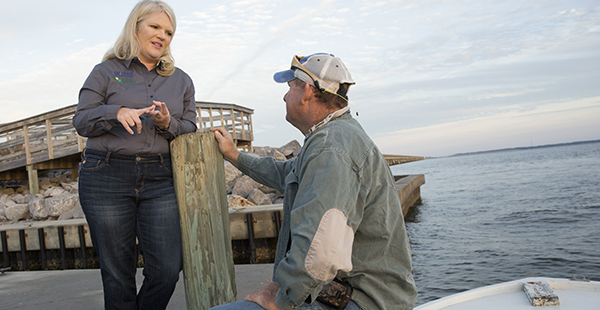Abstract
When water policies are introduced, they may not be universally supported. One stakeholder group or political party may be “for” the policy and contend that the public should vote “yes.” They may argue that the policy is fair to the parties involved or that it shows loyalty to affected communities. These are moral arguments used to sway public support. An opposing stakeholder group or political party may also issue moral arguments “against” the policy. They may argue that the public should vote “no” because the policy is not fair or is disloyal to impacted communities. In competitive policy scenarios like these, at least two factors affect public support for the policy – moral arguments and the identities of the communicators. Understanding how each of these factors influences policy preferences is key to creating a communication that is conducive to broad public support.
References
Brett, E. A. (1996). The participatory principle in development projects: The costs and benefits of cooperation. Public Administration and
Development, 16(1), 5–19. https://doi.org/10.1002/(SICI)1099-162X(199602)16:1<5::AID-PAD854>3.0.CO;2-6
Coglianese, C. (1997). Assessing consensus: The promise and performance of negotiated rulemaking. Duke Law Journal, 46(6), 1255–1349. https://doi.org/10.2307/1372989
Douglas, M., & Wildavsky, A. (1982). Risk and culture: An essay on the selection of technical and environmental dangers. University of California Press.
Eaton, W. M., Brasier, K. J., Burbach, M. E., Whitmer, W., Engle, E. W., Burnham, M., Quimby, B., Kumar Chaudhary, A., Whitley, H., Delozier, J., Fowler, L. B., Wutich, A., Bausch, J. C., Beresford, M., Hinrichs, C. C., Burkhart-Kriesel, C., Preisendanz, H. E., Williams, C., Watson, J., & Weigle, J. (2021). A conceptual framework for social, behavioral, and environmental change through stakeholder
engagement in water resource management. Society & Natural Resources, 34(8), 1111–1132. https://doi.org/10.1080/08941920.2021.1936717
Haidt, J. (2012). The righteous mind: Why good people are divided by politics and religion. Random House, Inc.
Hart, P. S., & Nisbet, E. C. (2012). Boomerang effects in science communication: How motivated reasoning and identity cues amplify opinion polarization about climate mitigation policies. Communication Research, 39(6), 701–723. https://doi.org/10.1177/0093650211416646
Hundemer, S., Monroe, M. C., & Adams, D. C. (2023). Building bipartisan support for pro-environmental water policy in a competitive communication environment: The effect of competing moral frames and political communicators. Journal of Hydrology, 627(A), 1–15. https://doi.org/10.1016/j.jhydrol.2023.130379
Irvin, R. A., & Stansbury, J. (2004). Citizen participation in decision making: Is it worth the effort? Public Administration Review, 64(1), 55–65. https://doi.org/10.1111/j.1540-6210.2004.00346.x
Mott Lacroix, K. E., & Megdal, S. B. (2016). Explore, synthesize, and repeat: Unraveling complex water management issues through stakeholder engagement wheel. Water, 8(4), Article 4. https://doi.org/10.3390/w8040118
Priscoli, J. D. (2004). What is public participation in water resources management and why is it important? Water International, 29(2), 221–227. https://doi.org/10.1080/02508060408691771
Rowe, G., & Frewer, L. J. (2000). Public participation methods: a framework for evaluation. Science, Technology, & Human Values, 25(1), 3–29. https://doi.org/10.1177/016224390002500101
Syme, G. J., & Nancarrow, B. E. (1992). Predicting public involvment in urban water management and planning. Environment and Behavior, 24(6), 738–758. https://doi.org/10.1177/0013916592246003
von Korff, Y., Daniell, K., Moellenkamp, S., Bots, P., & Bijlsma, R. (2012). Implementing participatory water management: Recent advances in theory, practice, and evaluation. Ecology and Society, 17(1). https://doi.org/10.5751/ES-04733-170130
Webler, T., Kastenholz, H., & Renn, O. (1995). Public participation in impact assessment: A social learning perspective. Environmental Impact Assessment Review, 15(5), 443–463. https://doi.org/10.1016/0195-9255(95)00043-E

This work is licensed under a Creative Commons Attribution-NonCommercial-NoDerivatives 4.0 International License.
Copyright (c) 2024 UF/IFAS

